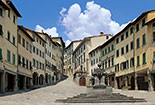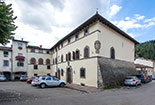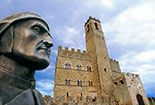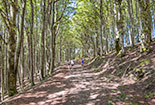THE TERRITORY OF PRATOVECCHIO STIA
in Casentino, a Tuscan valley with which you can get familiar in every detail through this site
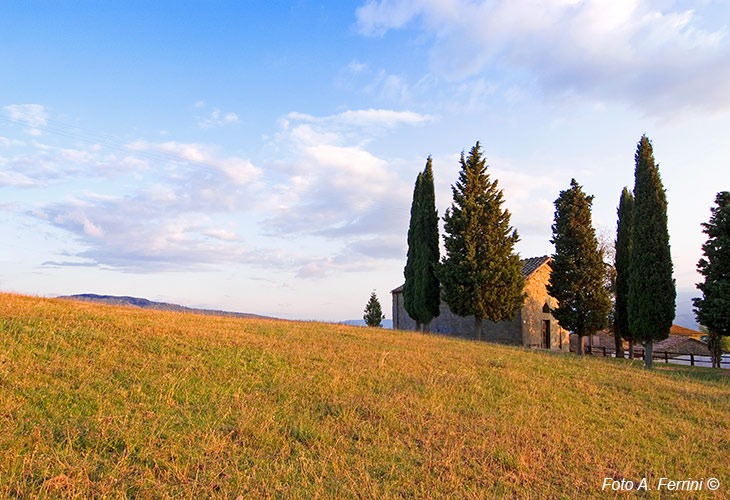
Texts and photos by Alessandro Ferrini ©
108 accurately described images about Dante,s place. Click to enlarge
Pratovecchio Stia, Municipality of the upper Casentino
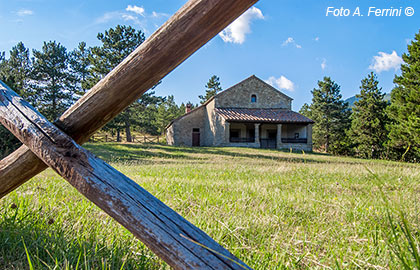 Since 2014, the towns of Pratovecchio and Stia have been part of the only municipality of the same name. These two villages of the upper Casentino, the first bathed by the Arno, are described in detail on this site - Stia, Pratovecchio - In this web section we will learn about the many beauties that the rest of the Municipality of Pratovecchio Stia offers us, a territory that from the 440 meters of altitude of the course of the Arno it rises to 1654 of Monte Falterona located within the National Park of the Casentino Forests.
Since 2014, the towns of Pratovecchio and Stia have been part of the only municipality of the same name. These two villages of the upper Casentino, the first bathed by the Arno, are described in detail on this site - Stia, Pratovecchio - In this web section we will learn about the many beauties that the rest of the Municipality of Pratovecchio Stia offers us, a territory that from the 440 meters of altitude of the course of the Arno it rises to 1654 of Monte Falterona located within the National Park of the Casentino Forests.
From this mountain, geographical and historical reference of the Casentino, our journey into this territory begins. The top of Falterona can be reached from the Casentino side by two routes: one starts from the church of Montalto, the other from Piancancelli. The second also takes us through the top of Monte Falco (1658 meters). In the massif there are two places of particular charm: the source of the Arno, of Dante's memory, and the Lake of Idols, a sacred place for the Etruscans. On the road that leads to both the starting points of these paths (Strada del Passo alla Calla) we can visit the pleasant village of Papiano, a place with the Roman toponym that we find mentioned as early as 1017 and where the beautiful church dedicated to Santa Cristina is located.
From Stia, taking the road to Londa and Mugello, after about five hundred meters a fork on the right takes us up to the Castle of Porciano. In addition to being able to admire the mighty tower of this Guidi keep dating back to the 11th century, from here we have an extraordinary view of Casentino. Continuing the road to Mugello, two kilometers from Stia, a road on the left leads to Campolombardo, a town whose name leaves no doubt about its Lombard origins. Another kilometer and a half, a crossroads to the right leads us in five hundred meters to the Sanctuary of Santa Maria delle Grazie, a place of devotion and art, founded in 1432 following the apparition of the Virgin Mary to a shepherdess. From here, taking the road back to Mugello, after almost four kilometers a detour to the left brings us down to Molin di Bucchio. A small cluster of houses next to the Arno, the first inhabited area that the river meets after completing its fast descent from Falterona. The mill present here is of medieval origin.
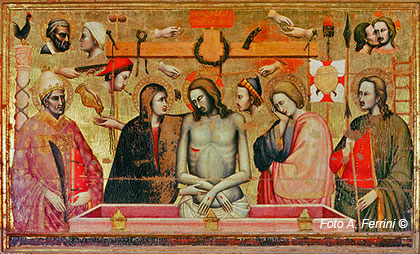 From Pratovecchio, taking the road that leads to the Hermitage of Camaldoli, we can go and visit some places that will reserve us pleasant historical and artistic surprises, and we will also find ourselves immersed in beautiful hilly landscapes. We will meet Ama, a town characterized by the presence of a church dedicated to San Biagio which presents a minor Romanesque style. The sacred building is placed next to a large lawn. From here with a few minutes' walk we can reach Masseto, an Etruscan site where archaeological excavations have brought to light the houses of this civilization and a tomb transformed into a furnace in the Middle Ages. In less than two kilometers, from Ama you can reach Lonnano, a place already documented in 1007 and where we can see the church dedicated to Saints Vito and Modesto whose origins date back to the 12th century. From Lonnano, a road that enters the lush forest of the National Park leads us to the Hermitage of Camaldoli. We, on the other hand, will descend towards Pratovecchio along the road that passes through Valiana. In this small village there is a church founded in 1126 and dedicated to San Romolo. Inside there is a beautiful table dating back to the last years of the fourteenth century, or the beginning of the following century, which shows the Piety of Christ with the symbols of the passion.
From Pratovecchio, taking the road that leads to the Hermitage of Camaldoli, we can go and visit some places that will reserve us pleasant historical and artistic surprises, and we will also find ourselves immersed in beautiful hilly landscapes. We will meet Ama, a town characterized by the presence of a church dedicated to San Biagio which presents a minor Romanesque style. The sacred building is placed next to a large lawn. From here with a few minutes' walk we can reach Masseto, an Etruscan site where archaeological excavations have brought to light the houses of this civilization and a tomb transformed into a furnace in the Middle Ages. In less than two kilometers, from Ama you can reach Lonnano, a place already documented in 1007 and where we can see the church dedicated to Saints Vito and Modesto whose origins date back to the 12th century. From Lonnano, a road that enters the lush forest of the National Park leads us to the Hermitage of Camaldoli. We, on the other hand, will descend towards Pratovecchio along the road that passes through Valiana. In this small village there is a church founded in 1126 and dedicated to San Romolo. Inside there is a beautiful table dating back to the last years of the fourteenth century, or the beginning of the following century, which shows the Piety of Christ with the symbols of the passion.
Before reaching Pratovecchio, a fork on the left leads to Casalino and Valagnesi. The first village is remembered since the 11th century, in 1137 it came under the jurisdiction of the Camaldolese monks who built an oratory here, transformed over the centuries into the current church where a beautiful Della Robbia ciborium is kept. The second town was probably born as a place of refuge for shepherds and woodcutters. It is worth visiting for its architecture, its drying rooms, which take us back to an ancient time.
On the hills that, along the town of Pratovecchio, rise from the right bank of the Arno we find two places of great historical and architectural importance, as well as of great charm: first of all the Pieve di Romena, National Monument in Casentino and, just above,  the homonymous castle. From the latter, which is framed by a splendid cypress avenue, in a few minutes by car you can reach the town of Scarpaccia. Shortly before arriving in this town where we will cross the Strada del Passo della Consuma which in 45 kilometers leads us to Florence, let's stop to observe the view of the Casentino which can be enjoyed from here: we will have the Castle of Romena below and the Sacro Monte della Verna.
the homonymous castle. From the latter, which is framed by a splendid cypress avenue, in a few minutes by car you can reach the town of Scarpaccia. Shortly before arriving in this town where we will cross the Strada del Passo della Consuma which in 45 kilometers leads us to Florence, let's stop to observe the view of the Casentino which can be enjoyed from here: we will have the Castle of Romena below and the Sacro Monte della Verna.
Taking the Strada della Consuma towards Florence, in Ponticelli a detour to the right in about a kilometer leads us to Castel Castagnaio. Here there is a church dedicated to San Bartolomeo and you can see the few, but fascinating, ruins of a castle of the Guidi dating from the end of the 11th century. This place is a true "sentinel" on the Casentino as it offers an extraordinary view of the valley. We traveled several kilometers to get here from Pratovecchio. In reality we are still very close in the air. From Campolombardo an old municipal road now disused allows us to reach Castel Castagnaio with a walk of less than three kilometers.



